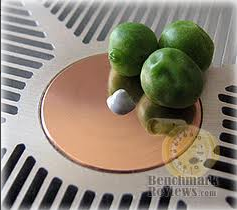New
#11
Thermal paste
-
-
New #12
I have now applied and removed my processors about 10 times now. I have an AMD Phenom so it has screws to tight the H50 down and before that I was using a Zalman air cooler. I do believe that less is more but the other aspect is this thermal paste is thick stuff and if you don't let it settle in and then re-tighten you don't get good dispersion of the paste. When I would remove the cooler I would find only oblong patterns of coverage. This is why I've changed my application from a pea sized drop in the center to the same amount by volume but I make an X shaped pattern. Now when I remove the heatsink the pattern of coverage is much more consistent and wider spread. I'm not a fan of the business card spreader method where you have a thin layer over the entire surface as it wastes a ton of thermal compound but I see if it's done properly and you don't mind the wasteful aspect it does give you total coverage but I still think the X method is working the best for me.
-
New #13
My CPU is on it's way from Newegg. GREAT timing LordBob. Thanks for all the input everyone. Helps me too.
-
New #14
Don't forget that AS5 also has a 'curing' time, so your temps may even drop a little lower in a little while.
-
New #15
I just apply a small amount (*) and spread it around evenly with my finger on both surfaces, not getting too close to the edges, and discard any excess on a tissue (wasteful, yes, the first few times, then you get the correct amount down pat).
You know you applied too much if there is any squeeze-out.
(*) the size of a lentil. That killed me when I first read it in a post in this forum. Had to go in the kitchen and check to see what size a lentil is. Dog-damn if it wasn't a perfect description!
There was a discussion in another group a while back as to whether the stuff is toxic and whether you should touch it or wear gloves and such, but it was found that typical thermal paste is mostly a silcone caulking with some metallic powder like aluminum or silver in the better stuff, so as long as you don't eat it you are fine. No cheese puffs while assembling the motherboard!
-
-
New #17
Those would be Cheesy Poofs right that you don't want to eat while working on your rig!
Let's all sing along!
Oh and that was me with the lentil reference as the whole pea thing was getting a bad rape. Don't ever plop down a peas size amount but a pea's worth in diameter yes. Volume wise the best is still the lentil.....any color lentil. Just don't plop down a Yentl that's a whole other issue !
-
-
New #19
-
New #20

The best method is to let the pressure from the heatsink spread the TIM. Using your finger, a credit card etc will never produce an even layer and that leads to tiny air bubbles which decreases heat transfer. The whole point of using thermal compound is to fill all the gaps between the chip and the heatsink. Why use a method that could potentially fail due to air pockets?
Related Discussions



 Quote
Quote